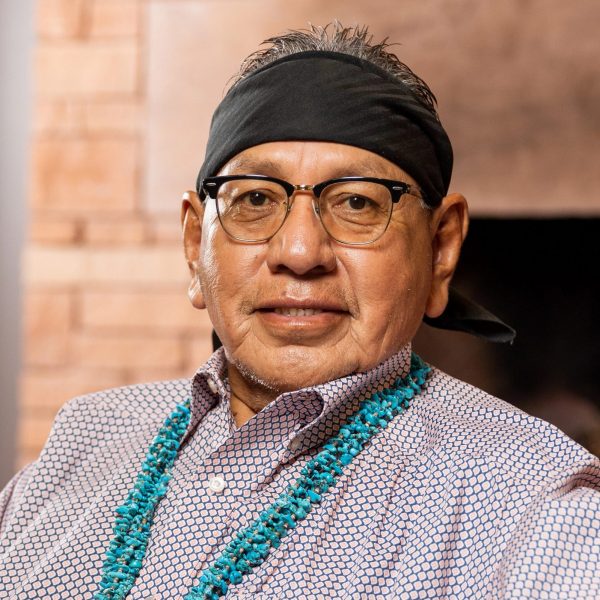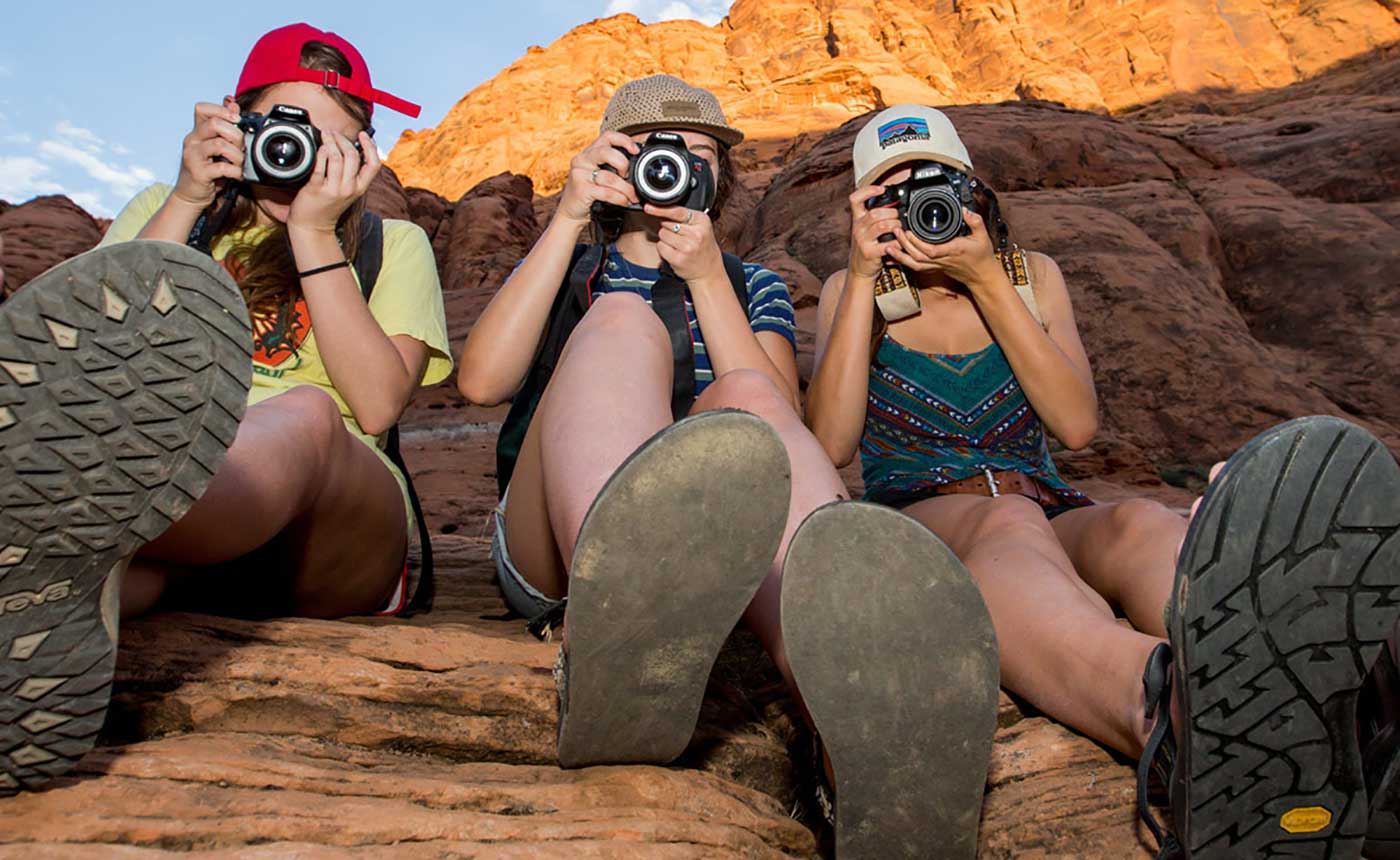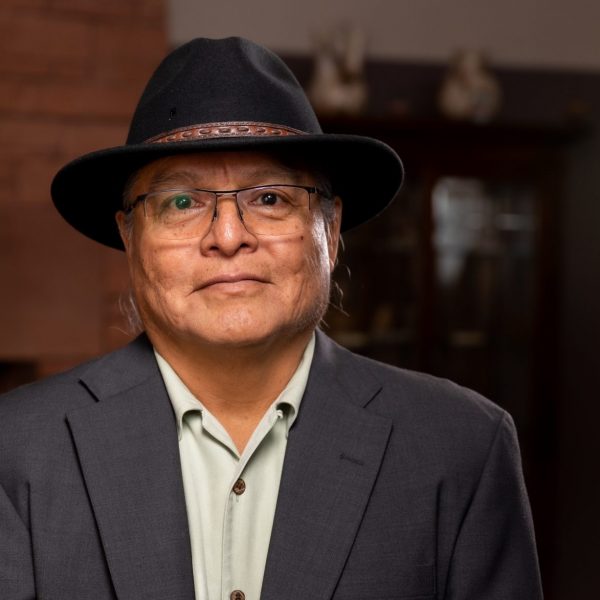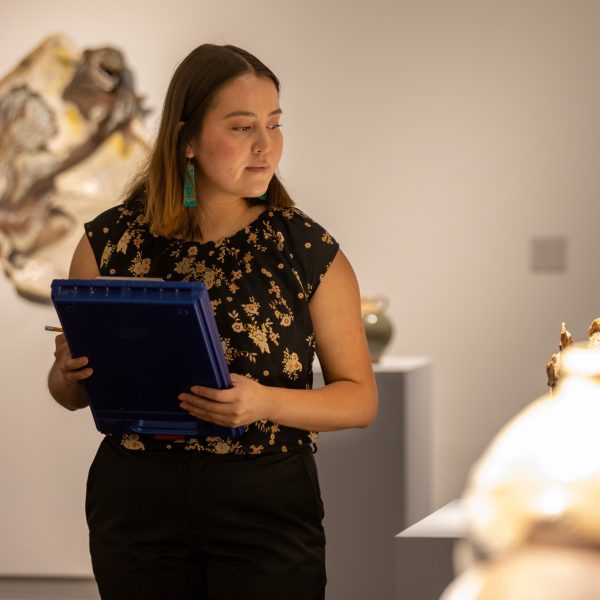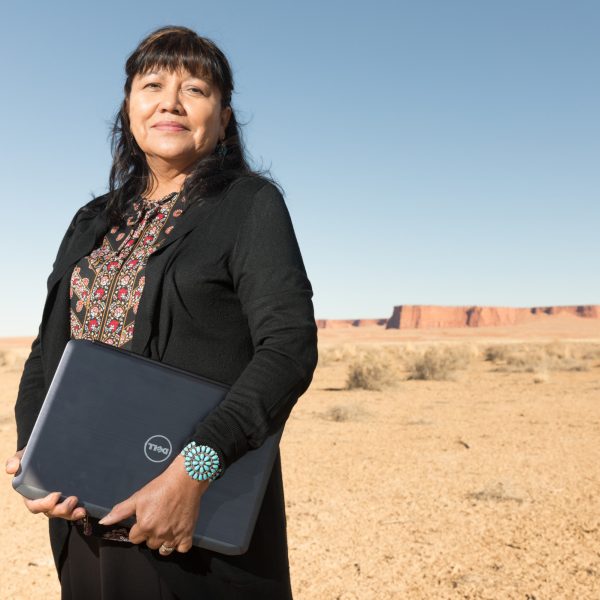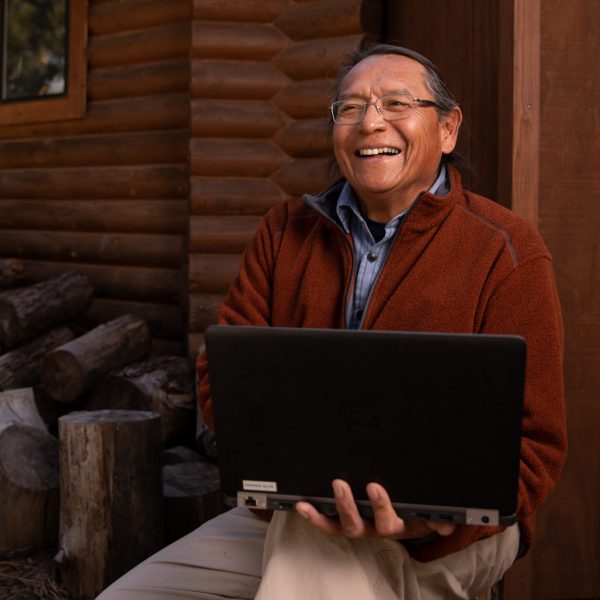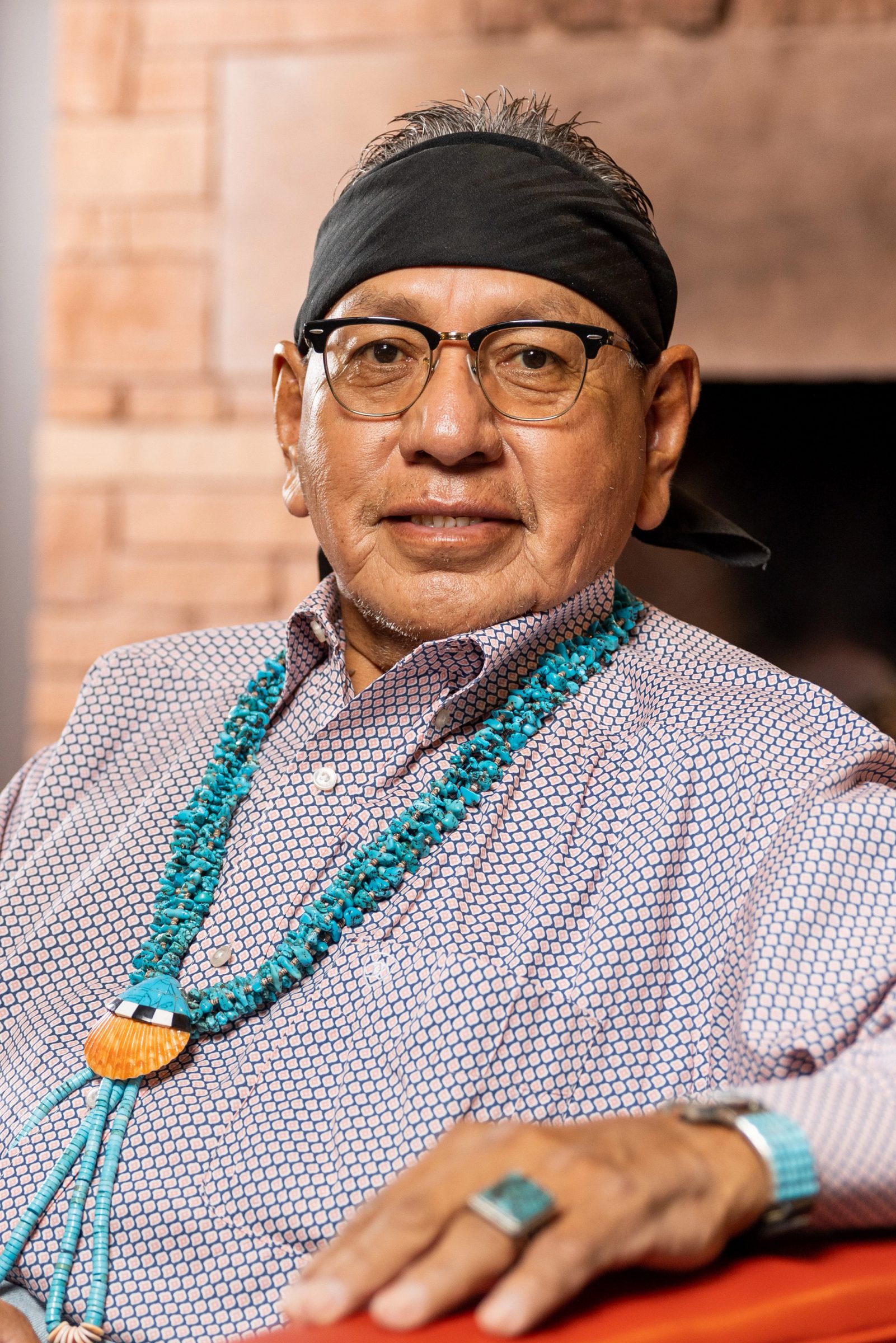
NAU’s Elder Cultural Advisors program was established more than 25 years ago to provide students with cultural and spiritual support from Native American Elders. This innovative program has been an essential component of NAU’s mission to serve and support Indigenous students. Working one-on-one with students, Elders help them maintain cultural continuity and balance Native cultural traditions with university life by providing traditional knowledge and teachings on campus. The Elders do not hold faculty positions and are funded through private gifts and grants.
Elder Paul Long, Diné, talks about his experiences in this Q&A. You can also read about the other two Elders, Viki Blackgoat, Diné, and LeRoy Shingoitewa, Hopi.
What is your tribal affiliation and clan information if you care to include it?
I’m a Navajo. I am Tachine (Red Running into Water) clan, born for Dziltlahnie (Mountain Cove), my grandparents are of the Tsinnaginnie (Black Streak), and my paternal grandparents are the Holtsooi (Meadow People) clan.
Tell us a little about your background—where and how you grew up.
I reside in Twin Lakes, New Mexico. I grew up in Tsayatoh, New Mexico, maybe 15 miles northwest of Gallup. Ever since I was small, I was raised with the traditional way of life. My dad was a medicine man, my grandfathers were medicine men. So I grew up in that. And throughout my years, I’ve been involved in various ceremonies that they do. In 2003, I was ordained to be a full-time medicine man in the Blessing and the Beauty Way. Also, I do ceremonies in what we call the Enemy Way and a protection prayer and all kinds of small ceremonies that I do for The People. I still do that. I go all over the reservation and even outside the reservation, to Tucson; Phoenix; Colorado Springs, Colorado; and then many border towns like Albuquerque, Flagstaff, Tuba City, Farmington, and also within the Navajo Nation itself, so it keeps me busy.
What would you like the campus and community to know about your story?
My dad told me that if I knew about our traditional way of life, ceremonies and all that, but didn’t really have education, then I’d be unbalanced. My dad used to tell me that to be balanced is to have both at the same level, meaning, our traditional belief and way of life and also our Western way of life, education, and all that. So with that, I have an associate degree in drafting, and I have a bachelor’s and a master’s in social work. And, as we speak, I’m working on my doctorate.
What would you like the campus and community to know about your culture?
I give credit to my mom, my dad, and my grandpas. I would say I got about a good 90 percent of my traditional knowledge from them. I’m convinced that everything that they taught me has meaning. That’s how I teach and take care of my immediate family: my wife, my children, my grandchildren. My wife was raised on what we call Native American Church. That’s a different kind of traditional belief from the Plains Indians, from around South Dakota, North Dakota, Oklahoma, and all that. And she was raised on that. Myself, I was raised on the Navajo tradition. When we got married, I’ve been married to her for 45 years, we put Native American Church and Navajo traditional together. We raised our children with that, and now our grandchildren. So now they’re all out on their own, and they have their own way of taking care of themselves as far as traditional healthcare, their mind or emotion, spiritual and physical. There’s special things that they have on both sides, and they know which one to use whenever they have certain problems or whatever.
What do the Native American Initiatives’ values of Relationships, Respect, Responsibility, and Resilience mean to you?
Our students have to get along with each other and know their relationships and have respect for community members, leaders, and the elderly. They need to know their responsibilities to their families and the community members and have resilience to any form of danger, sickness, downfall, and obstructions.
What do you hope to achieve as a Native American Cultural Center (NACC) Elder?
I want students, first of all, to know who they are as far as being an Indigenous person, and what the values of it are, and what their roots are, their clan. I encourage them to do research and analyze and look into, again, who they are, what their Tribe stands for, or what their people stand for, their grandmas and grandpas, and all the sacred elements and stuff with your Tribe.
NAU is at the bottom of our most significant sacred mountain, which is the San Francisco Peaks. In Navajo, the San Francisco Peaks is what they call our mother mountain. And if we have any kind of problems, healthcare, emotional, mental, physical, whatever, then we can go to that mountain.
What challenges are facing Indigenous students?
Financial, being away from home, different diversity, and a different environment.
Why is the NAU land acknowledgement important for the university?
NAU is at the bottom of our most significant sacred mountain, which is the San Francisco Peaks. In Navajo, the San Francisco Peaks is what they call our mother mountain. And if we have any kind of problems, healthcare, emotional, mental, physical, whatever, then we can go to that mountain. And with your prayers, and with different kinds of offerings, you can ask that mountain, just like you’re talking to your mom. Just go up to your mom and ask her to protect you and to get you healed. A lot of people think that if they’re away from the mountain, how can they be on sacred ground? Well, the way we know is that if there’s lightning or wherever on that mountain, and if we’re at NAU campus, if you hear that thunder, you’re in the vicinity of that sacred mountain. That’s how we tell.
I can’t stress it enough. All people from all walks of life need to know NAU is so fortunate to be on such sacred land. And, of course, Apaches and Yavapais and all of that, they also worship that mountain, that place in their own way. So, you know, if somebody kept asking me for more of a description of that place, I would say it’s heaven.
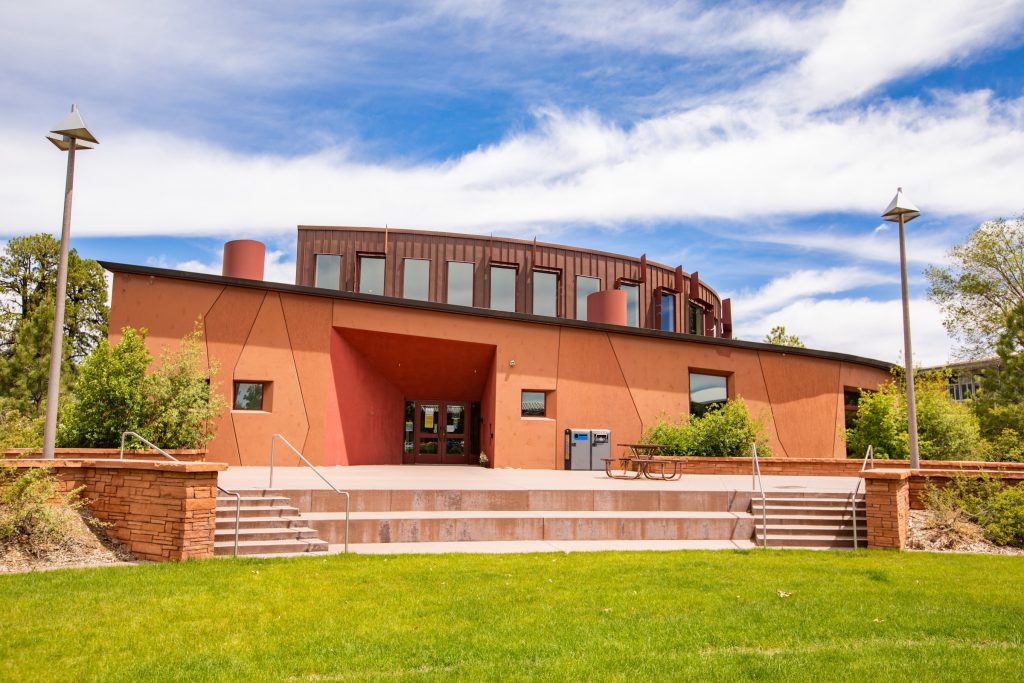
Please provide ways you are inspiring cultural stewardship.
I take part in responsible planning and management of resources and provide traditional knowledge, wisdom, and guidance for NAU.
Can you share a specific moment when interacting with an NAU student as an Elder that you find memorable?
All the time that I’ve been going down there, there are some that, they reach out to me, including their family. And sometimes I’ll do certain ceremonies for them at their own residence, where they are, you know, where mom and dad or whoever are. And then also right there in Flagstaff, too. There’s this one girl, she’s a Navajo student attending school there, and she reached out because at the apartment that she has, she was seeing things that were negative images, and hearing songs, and just wasn’t comfortable in her apartment. So we, me and my wife, we went there and we did a cleansing. And we asked in the appropriate way, a traditional ceremonial way, we had to ask whatever the spirit or whatever that was lingering around to leave. And we went back, I think about a month later, and she came looking for us at the Native American Cultural Center. And she says, “I don’t feel, see, or hear anything now.” So you know, just hearing that from people that you do ceremony for, then it’s worthwhile.
What is your family history with NAU?
My daughter and nephews, nieces, and grandchildren are alumni of NAU.
What is your favorite part of being an NACC Elder?
I get to share, teach, and reach out with my traditional beliefs and knowledge with students and staff, while representing an excellent organization (NAU).
Is there anything else that you would like to share?
Well, for the students themselves, and the family, mom, dad, relatives, and faculty of NAU to know that we are there for all of them as far as looking after or providing whatever we can so they can keep healthy. So they can reach their goals and leave NAU with a very special place in their heart and also to have that place in their heart for the rest of their lives. Remember that place and the people and then walk away with the highest credential that you can get.
That’s why I go to NAU. It’s an amazing place. I’d like to work there and help students, faculty, and NAU itself as long as I can.

